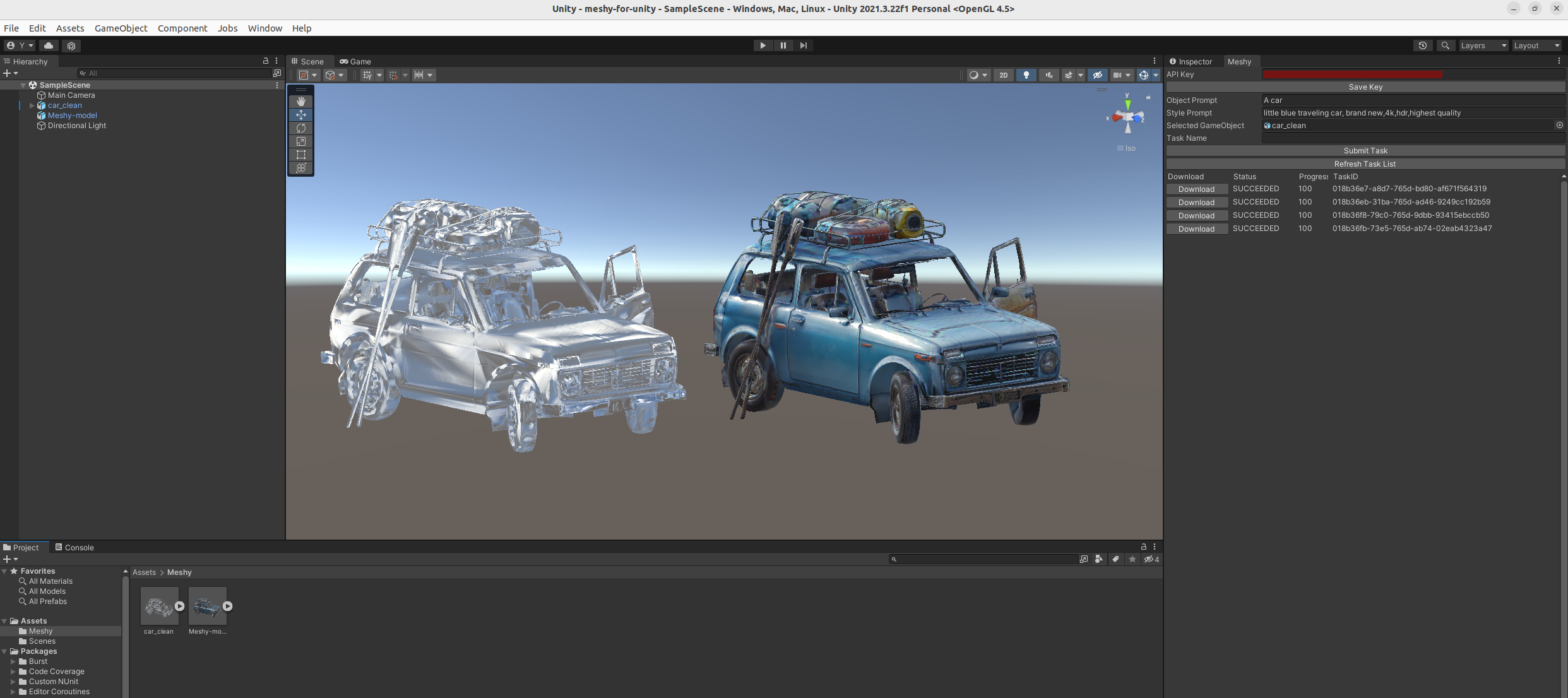
Meshy: Complete Buyer's Guide
Comprehensive AI-powered 3D generation platform
Meshy is a comprehensive AI-powered 3D generation platform that transforms text descriptions and images into 3D models, targeting game developers, 3D artists, and XR creators[132][151].
Market Position & Maturity
Market Standing
Meshy operates within the rapidly expanding AI 3D generation market, valued at $2.5 billion in 2024 and projected to reach $15.1 billion by 2033 at 23.3% CAGR[1].
Company Maturity
The company demonstrates operational maturity through stable cloud infrastructure partnerships with Lambda[146] and consistent platform updates including the recent Meshy-4 release focused on topology improvements[148].
Growth Trajectory
Market validation comes through positive user sentiment on Product Hunt and successful integration reports from game studios using Unity pipelines[134][137][147][150].
Industry Recognition
Industry recognition remains limited compared to enterprise alternatives, though the platform benefits from the broader market shift toward AI-powered design tools.
Strategic Partnerships
Stable cloud infrastructure partnerships with Lambda[146].
Longevity Assessment
The platform's transparent tiered pricing structure from free access to $96/month unlimited plans demonstrates business model maturity and scalability planning[140][145].
Proof of Capabilities
Customer Evidence
Game studios report successful Unity pipeline integration, leveraging the platform's auto-rigging and PBR texturing capabilities for asset creation workflows[134][137].
Quantified Outcomes
DesignRush case studies (2025) document quantified time savings for apparel designers using AI texturing capabilities, demonstrating measurable business outcomes though specific ROI metrics vary by asset complexity[150].
Case Study Analysis
DesignRush case studies (2025) document measurable time savings for apparel designers using AI texturing capabilities, though specific ROI metrics vary considerably by asset complexity and use case[150].
Market Validation
Customer adoption validation comes through consistent positive feedback on Product Hunt, with users emphasizing speed and ease of use as primary benefits[147][150].
AI Technology
Meshy's AI technology foundation centers on four primary capabilities: text-to-3D generation, image-to-3D conversion, AI texturing, and animation features[132][149].
Architecture
The platform's cloud-based architecture eliminates hardware setup complexity while leveraging computational infrastructure through collaboration with Lambda for stability[146].
Primary Competitors
Primary competitors include specialized AI tools like Tripo AI and 3D AI Studio, as well as enterprise platforms from Adobe and Autodesk[150].
Competitive Advantages
Competitive advantages center on accessibility and feature breadth rather than specialized performance. Meshy's transparent pricing structure and sub-minute generation times provide clear value propositions[132][137][140][145][148].
Market Positioning
Market positioning targets the middle segment between freemium tools and enterprise solutions.
Win/Loss Scenarios
Win scenarios favor Meshy when organizations prioritize rapid iteration, comprehensive features within a single platform, and transparent pricing over specialized performance or enterprise integration.
Key Features

Pros & Cons
Use Cases
Integrations
Pricing
Featured In Articles
Comprehensive analysis of AI 3D Mockup Tools for AI Design for AI Design professionals. Expert evaluation of features, pricing, and implementation.
How We Researched This Guide
About This Guide: This comprehensive analysis is based on extensive competitive intelligence and real-world implementation data from leading AI vendors. StayModern updates this guide quarterly to reflect market developments and vendor performance changes.
151+ verified sources per analysis including official documentation, customer reviews, analyst reports, and industry publications.
- • Vendor documentation & whitepapers
- • Customer testimonials & case studies
- • Third-party analyst assessments
- • Industry benchmarking reports
Standardized assessment framework across 8 key dimensions for objective comparison.
- • Technology capabilities & architecture
- • Market position & customer evidence
- • Implementation experience & support
- • Pricing value & competitive position
Research is refreshed every 90 days to capture market changes and new vendor capabilities.
- • New product releases & features
- • Market positioning changes
- • Customer feedback integration
- • Competitive landscape shifts
Every claim is source-linked with direct citations to original materials for verification.
- • Clickable citation links
- • Original source attribution
- • Date stamps for currency
- • Quality score validation
Analysis follows systematic research protocols with consistent evaluation frameworks.
- • Standardized assessment criteria
- • Multi-source verification process
- • Consistent evaluation methodology
- • Quality assurance protocols
Buyer-focused analysis with transparent methodology and factual accuracy commitment.
- • Objective comparative analysis
- • Transparent research methodology
- • Factual accuracy commitment
- • Continuous quality improvement
Quality Commitment: If you find any inaccuracies in our analysis on this page, please contact us at research@staymodern.ai. We're committed to maintaining the highest standards of research integrity and will investigate and correct any issues promptly.